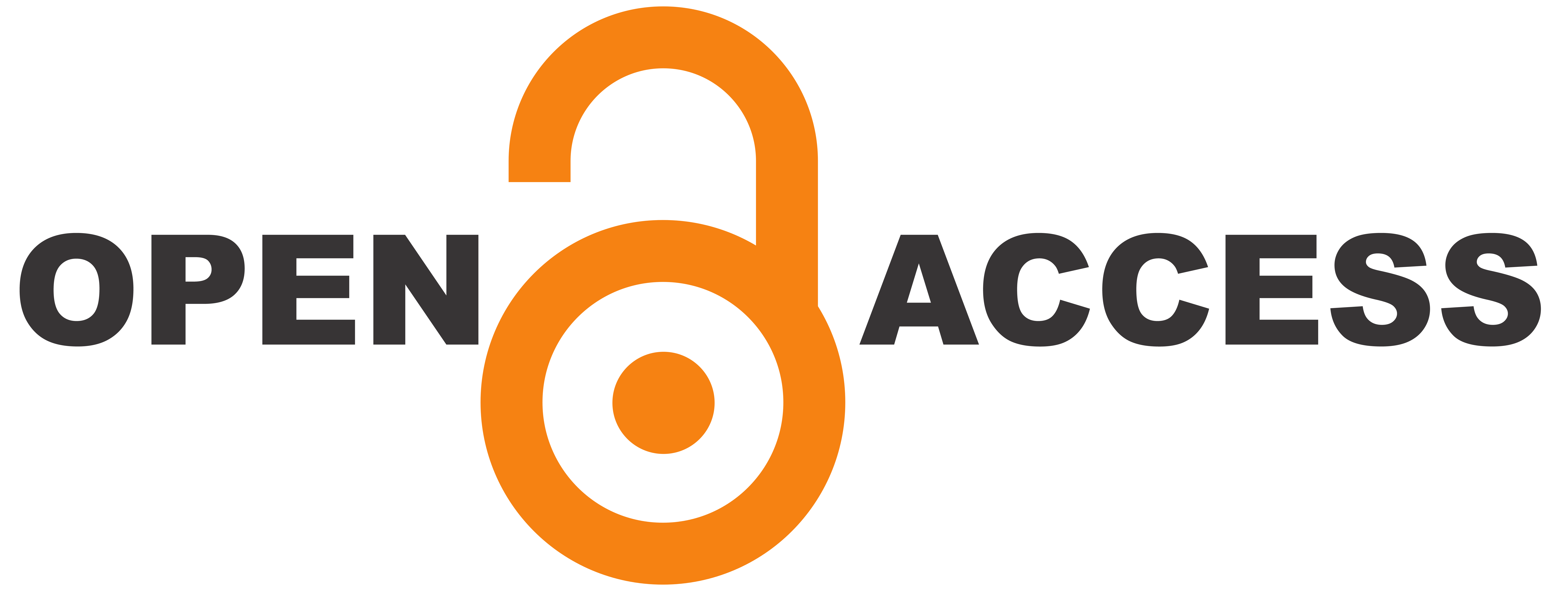Analysis of Self Excited Induction Generator for Standalone Micro-Hydro Scheme
Abstract
Keywords
Full Text:
PDFReferences
R. C. Bansal, T. S. Bhatti and D. P. Kothari, “Bibliography on the application of induction generators in nonconventional energy systems”, IEEE Transactions on Energy Conversion, Vol. 18, Issue No. 3, Sept. 2003, pp. 433-439. Doi: 10.1109/TEC.2003.815856
G. K. Singh, “Self-excited induction generator research - A survey”, Electric Power Systems Research, Vol. 69, Issues 2–3, May 2004, pp. 107-1144. Doi: https://doi.org/10.1016/j.epsr.2003.08.004
S. S. Murthy, G. Bhuvaneswari, S. Gao and R. K. Ahuja, “Self excited induction generator for renewable energy applications to supply single-phase loads in remote locations”, 2010 IEEE International Conference on Sustainable Energy Technologies (ICSET), Kandy, 2010, pp. 1-8. Doi: 10.1109/ICSET.2010.5684947
E. D. Bassett and F. M. Potter, “Capacitive Excitation for Induction Generators”, AIEE Trans. Electrical Engineering, Vol. 54, Issue No. 5, pp. 540 – 545, 1935.
J. M. Elder, J. T. Boys and J. L. Woodward, “The process of self excitation in induction generators”, IEE Proceedings B - Electric Power Applications, Vol. 130, Issue No. 2, March 1983, pp. 103-108. Doi: 10.1049/ip-b.1983.0016
C. F. Wagner, “Self-Excitation of Induction Motors With Series Capacitors”, Transactions of the American Institute of Electrical Engineers, Vol. 60, Issue No. 12, Dec. 1941, pp. 1241-1247. Doi: 10.1109/T-AIEE.1941.5058259
M. B. Brennen and A. Abbondanti, “Static Exciters for Induction Generators”, IEEE Transactions on Industry Applications, Vol. IA-13, Issue No. 5, Sept. 1977, pp. 422-428. Doi: 10.1109/TIA.1977.4503433
C. F. DeSieno and B. J. Beaudoin, “A Guide to the Application of Capacitors without Induction Motor Self-Excitation”, IEEE Transactions on Power Apparatus and Systems, Vol. 84, Issue No. 1, 1965. Doi: 10.1109/TPAS.1965.4766102
H. P. Tiwari and J. K. Diwedi, “Minimum Capacitance Requirement for Self-Excited Induction Generator”, Proc. of National Power System Conference (NPSC 2002), Indian Institute of Technology, Kharagpur, December 27-29, 2002, pp. 5-10. Retrieved from http://www.iitk.ac.in/npsc/Papers/NPSC2002/16.pdf
N. H. Malik and A. A. Mazi, “Capacitance Requirements for Isolated Self Excited Induction Generators”, IEEE Transactions on Energy Conversion, Vol. EC-2, Issue No. 1, March 1987, pp. 62-69. Doi: 10.1109/TEC.1987.4765805
M. Senthilkumar, “Optimal Capacitor for Maximum Output Power Tracking of Self Excited Induction Generator using Fuzzy Logic Approach”, International Journal on Computer Science and Engineering, Vol. 02, Issue No. 5, 2010, pp. 1758-1762. Retrieved from https://pdfs.semanticscholar.org/f231/bd153c5f102279384e1ff28737d960745c60.pdf
T. F. Chan, “Capacitance requirements of self-excited induction generators”, IEEE Transactions on Energy Conversion, Vol. 8, Issue No. 2, June 1993, pp. 304-311. Doi: 10.1109/60.222721
A. Kumari, A. G. Thosar and S. S. Mopari, “Determination of Excitation Capacitance of a Three Phase Self Excited Induction Generator”, International Journal of Advanced Research in Electrical, Electronics and Instrumentation Engineering, Vol. 4, Issue 5, May 2015, pp. 4069-4074. Retrieved from http://www.ijareeie.com/upload/2015/may/38_DETERMINATION.pdf
A. K. Al Jabri and A. I. Alolah, “Capacitance requirement for insolated self-exicted induction generator”, IEE Proceedings B - Electric Power Applications, Vol. 137, Issue No. 3, May 1990, pp. 154-159. Doi: 10.1049/ip-b.1990.0016
V. P. Chandran and S. Vadhera, “Capacitance requirements of self excited induction generator for different operating conditions”, Proc. of 2011 International Conference on Energy, Automation and Signal, Bhubaneswar, India. 28-31, Dec 2011, pp. 1-6. Doi: 10.1109/ICEAS.2011.6147177
S. S. Murthy, R. Jose and B. Singh, “Experience in the Development of Microhydel Grid Independent Power Generation Scheme using Induction Generators for Indian Cconditions”, Proceedings of IEEE TENCON'98: IEEE Region 10 International Conference on Global Connectivity in Energy, Computer, Communication and Control (Cat. No. 98CH36229), New Delhi, India, 17-19 Dec. 1998, Vol. 2, pp. 461-465. Doi: https://doi.org/10.1109/TENCON.1998.798246
B. Singh, S. S. Murthy, and S. Gupta, “STATCOM-Based Voltage Regulator for Self-Excited Induction Generator Feeding Nonlinear Loads”, IEEE Transactions on Industrial Electronics, Vol. 53, Issue No. 5, 2006, pp. 1437–1452. Doi: 10.1109/TIE.2006.882008
B. Nia Roodsari, E. P. Nowicki and P. Freere, “An experimental investigation of the Distributed Electronic Load Controller: A new concept for voltage regulation in microhydro systems with transfer of excess power to household water heaters”, Proc. of 2014 IEEE Canada International Humanitarian Technology Conference - (IHTC), Montreal, QC, 1-4 June 2014, pp. 1-4. Doi: 10.1109/IHTC.2014.7147548
L. G. Scherer, C. B. Tischer, F. C. Posser, C. M. Franchi and R. F. de Camargo, “Hybrid topology for voltage regulation applied in three-phase four-wire micro hydro power station”, Proc. of IECON 2013 - 39th Annual Conference of the IEEE Industrial Electronics Society, Vienna, 2013, pp. 7169-7174. Doi: 10.1109/IECON.2013.6700324
“Induction Generator | Application of Induction Generator”, Electrical4u.com. [Online]. Available: http://www.electrical4u.com/induction-generator/ (Accessed: Apr 24, 2018).
Copyright (c) 2019 Author

This work is licensed under a Creative Commons Attribution 4.0 International License.
Call for Paper for the upcoming issue
The journal welcomes publications of high-quality research papers, review papers, white papers, conference papers, etc. on theoretical developments and practical applications in the domain of Electrical and Electronics and its allied sciences.
Authors are solicited to contribute to the journal by submitting articles that illustrate original research works, short communications and review articles in the thrust areas of the journal as mentioned on the About page.
- The downloadable Template and the Online submission link are available on the PAPER SUBMISSION page.
ADBU Journal of Electrical and Electronics Engineering (AJEEE) - ISSN: 2582-0257 is an International peer-reviewed Open-Access Online journal in the English language that publishes scientific articles which contribute new novel experimentation and theoretical work in all areas of Electrical and Electronics Engineering and its applications. |
* The views, interpretations and opinions expressed in the articles are those of the author(s) and should not be considered to reflect the opinions of the Editorial Board of this journal- AJEEE.
 |




